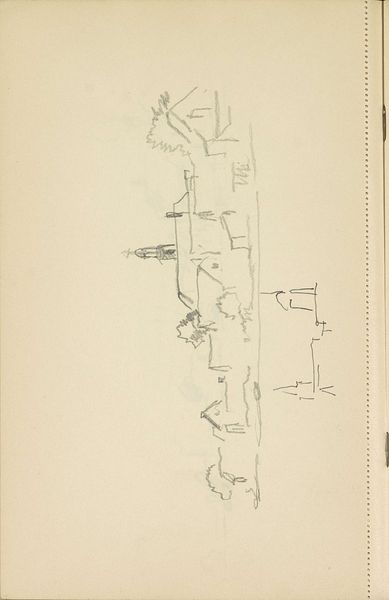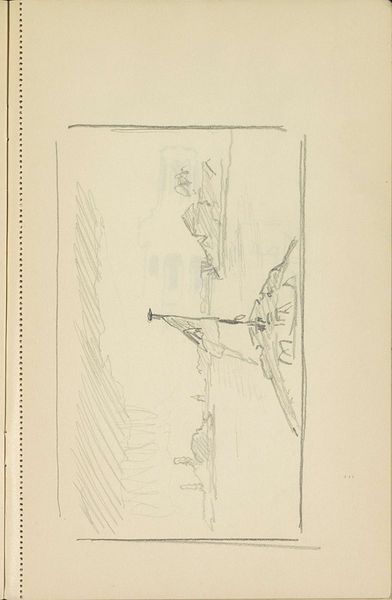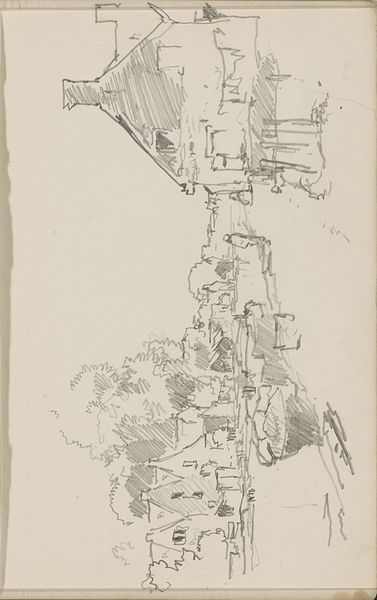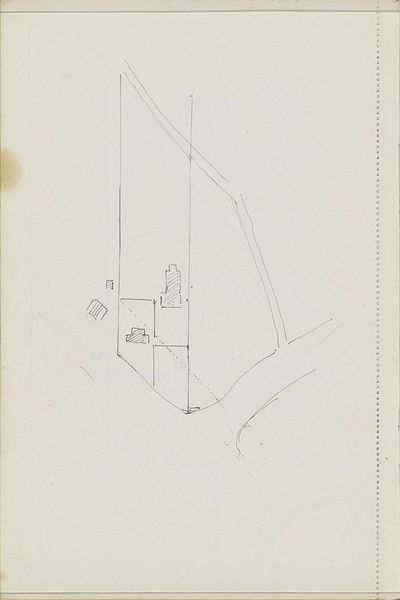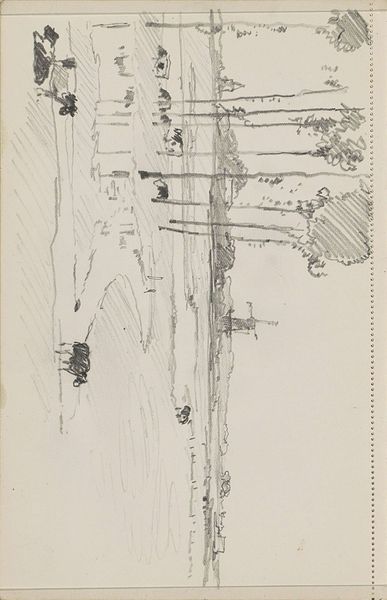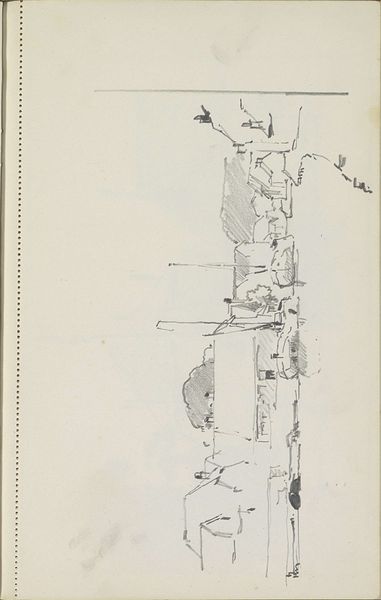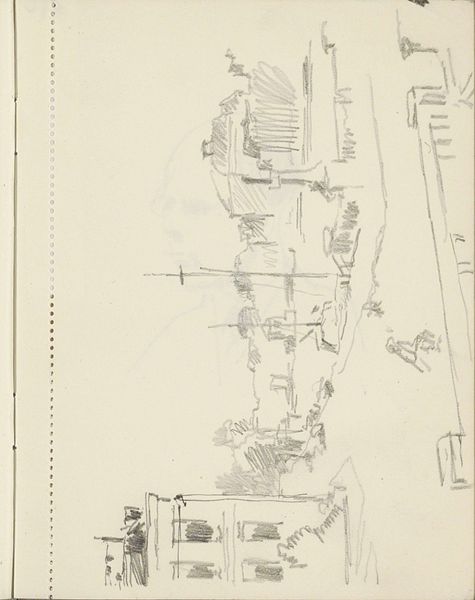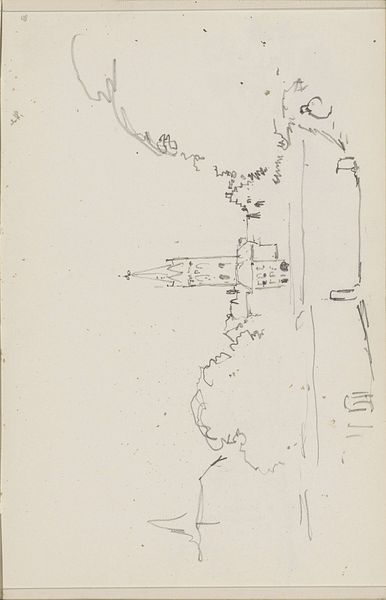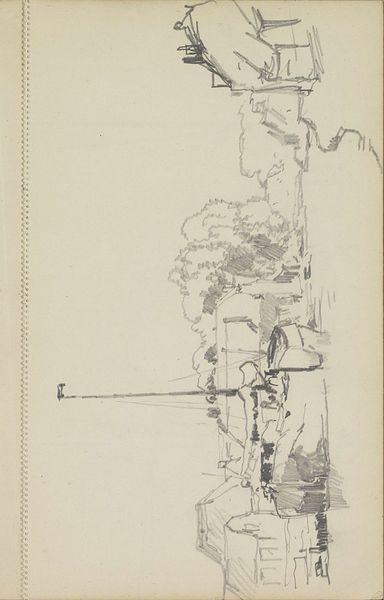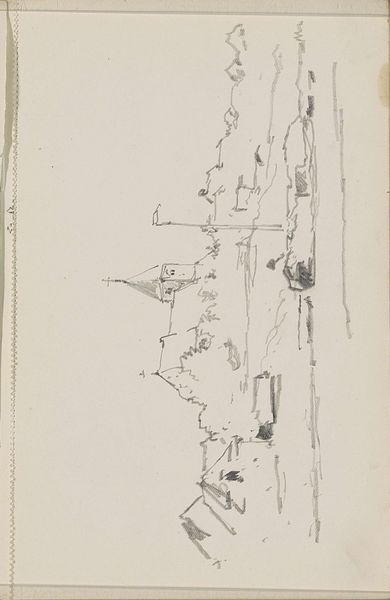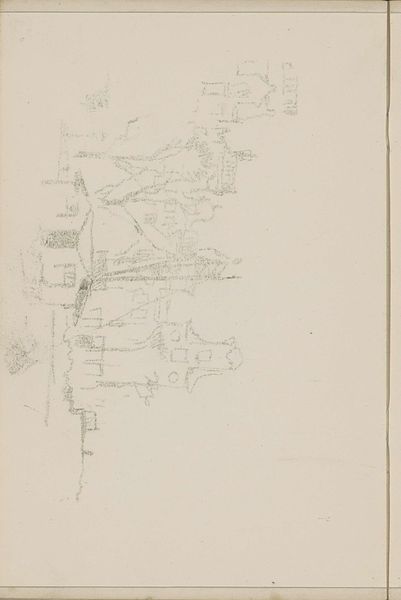
drawing, ink, pen
#
drawing
#
ink drawing
#
pen sketch
#
landscape
#
figuration
#
personal sketchbook
#
ink
#
idea generation sketch
#
sketchwork
#
ink drawing experimentation
#
geometric
#
pen-ink sketch
#
line
#
sketchbook drawing
#
pen
#
sketchbook art
#
initial sketch
Copyright: Rijks Museum: Open Domain
Editor: Here we have "Gebouw met twee torens op een heuvel," or "Building with two towers on a hill" by Cornelis Vreedenburgh, created sometime between 1890 and 1946. It's an ink drawing, looks like something straight out of the artist's sketchbook. What strikes me is how rudimentary it appears; what’s your read on this artwork? Curator: Well, let's consider the context. This isn't some finished masterwork intended for display. This is ink on paper, direct and unpretentious. Its value lies in revealing the artistic process and how materials and labor intersect with artistic intention. This pen sketch underscores that initial spark of an idea. Consider the material constraints Vreedenburgh faced – ink and paper readily available and cheap allowed this. Does the immediacy of the medium change your view? Editor: I suppose it highlights the difference between creating something quickly for exploration versus laboring over a larger, more polished piece meant for exhibition. Was Vreedenburgh trying to detach from notions of ‘high art’ with such commonplace materials? Curator: Precisely! Think of this in terms of challenging established hierarchies within the art world. This simple ink drawing can invite scrutiny of who has access to materials and the means of production. The use of a pen and ink allows for immediate documentation. It questions those art forms often seen as ‘higher’ because of their supposed refined production or use of rare materials. Could we argue, therefore, this 'sketchwork' holds a distinct power in its understated execution? Editor: It makes me think about art's role in documenting everyday experiences and spaces. It moves beyond grandeur. What did people want from art, what was accessible, and who could afford these grand materials? Curator: Precisely. These humble sketches bring these considerations into sharp relief. Now, thinking about it... does this change how you understand the landscape? Editor: Absolutely, I am drawn to see art as embedded in the social, economic, and material conditions of its making. The simple tools really amplify the complexity. Curator: And it forces us to reconsider what is deemed worthy of our attention and critique.
Comments
No comments
Be the first to comment and join the conversation on the ultimate creative platform.


